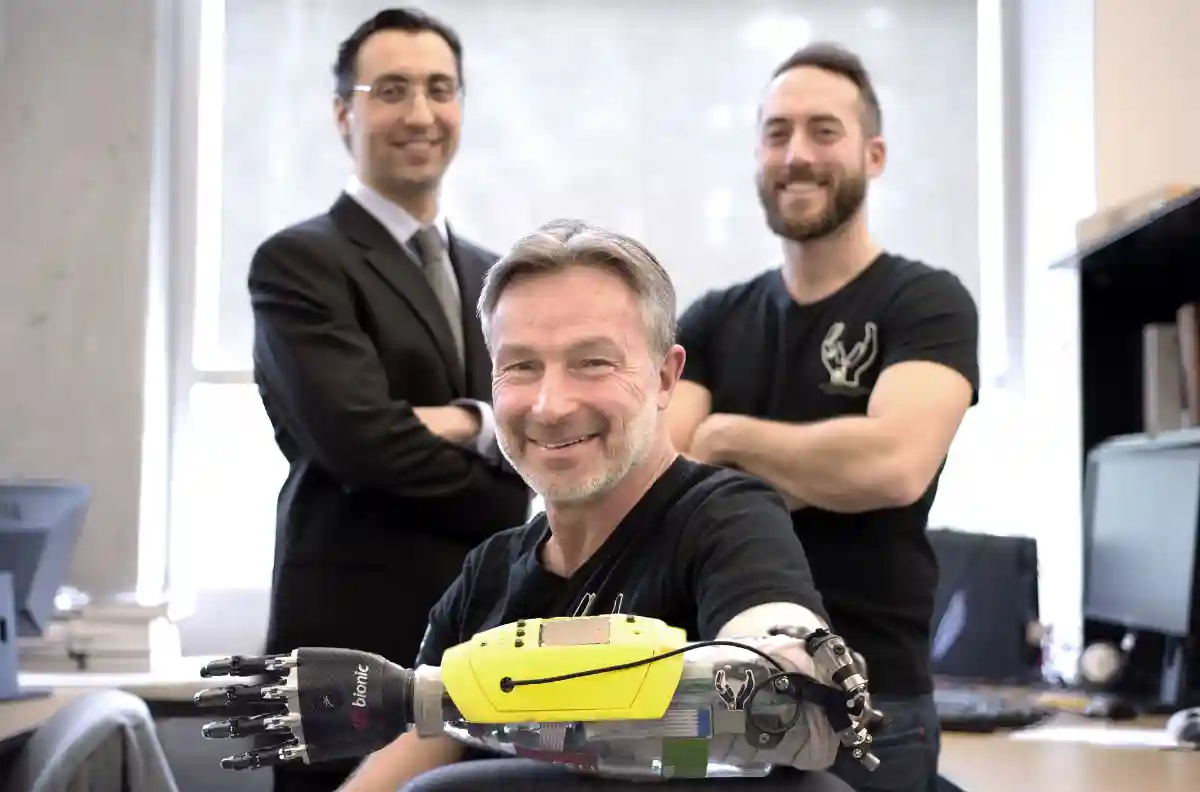Celiac.com 02/01/2024 – In the ever-evolving landscape of technology, the demand for electronic skin (e-skin) has surged, fueled by demand for skin-attachable devices, robotics, and prosthetics. As advancements unfold, researchers have grappled with the challenge of creating e-skin that not only mimics human skin, but is also biocompatible for practical on-skin applications.
A groundbreaking study now introduces a remarkable innovation—a gluten-based network cross-linked with liquid metal—that propels e-skin into a new era of self-healing, biocompatibility, biodegradability, stretchability, and conductivity.
The research team included Bin Chen, Yudong Cao, Qiaoyu Li, Zhuo Yan, Rui Liu, Yunjiao Zhao, Xiang Zhang, Minying Wu, Yixiu Qin, Chang Sun, Wei Yao, Ziyi Cao, Pulickel M. Ajayan, Mason Oliver Lam Chee, Pei Dong, Zhaofen Li, Jianfeng Shen, and Mingxin Ye.
They are variously affiliated with the Institute of Special Materials and Technology, Fudan University, Shanghai, China; the Department of Chemistry, Fudan University, Shanghai, China; the State Key Laboratory of Molecular Engineering of Polymers, Department of Macromolecular Science, Fudan University, Shanghai, China; the State Key Laboratory of Food Nutrition and Safety, Tianjin University of Science & Technology, Tianjin, China; the Department of Materials Science and NanoEngineering, Rice University, Houston, TX USA; the Department of Mechanical Engineering, George Mason University, Virginia, VA USA; and with RENISHAW (Shanghai) Trading CO.LTD, SPD, Shanghai, China
The Quest for Biocompatible E-Skin: A Formidable Challenge
The predominant use of non-biological materials in current e-skin technologies poses a hurdle in achieving true biocompatibility. Despite the array of synthetic materials, there’s a persistent desire to explore options that align with the body’s natural composition. Proteins, being integral to skin, emerge as the ideal candidates for creating biocompatible e-skin. However, engineering proteins to attain both controllable mechanical properties and self-healing capabilities has proven to be a formidable challenge.
A Hybrid Approach: Gluten Network and Liquid Metal Integration
In response to this challenge, a pioneering research team has introduced a hybrid gluten network, incorporating a eutectic gallium-indium alloy (EGaIn) to craft a self-healing e-skin with enhanced mechanical properties. The innovation lies in leveraging the intrinsic reversible disulfide bond/sulfhydryl group reconfiguration of gluten networks as a driving force. EGaIn, a liquid metal, acts as a chemical cross-linker, inducing a secondary structure rearrangement of gluten to form additional β-sheets as physical cross-linkers.
Key Achievements of the Gluten-Based E-Skin
Self-Healing Capability: The developed gluten-based material showcases intrinsic self-healing abilities, a feature crucial for the durability and longevity of e-skin.
Exceptional Stretchability: Surpassing the capabilities of synthetic materials, the e-skin exhibits stretchability exceeding 1600%, mirroring the flexibility and resilience of human skin.
Biocompatibility and Biodegradability: The final e-skin not only aligns with the body’s natural components, making it biocompatible but also stands as an environmentally conscious creation with biodegradable properties.
Cell Proliferation Promotion: Remarkably, the e-skin has demonstrated the ability to promote the proliferation of skin cells, further enhancing its potential for integration with biological systems.
Strain Sensing Abilities: The biocompatible e-skin has proven its capability to sense strain changes induced by various human motions, offering a promising avenue for diverse applications.
Celiac Disease Concerns
Certainly a prosthetic device that has gluten contained it its e-skin would be a concern for anyone with celiac disease. Would traces of gluten be spread onto foods that are touched by the device? What about by helper robots that covered with such e-skin? Those with celiac disease clearly hope gluten isn’t the final solution to addressing the issue of skin on prosthetics and robots. Hopefully a better gluten-free solution will be found.
Microregulation of Protein Networks: Paving the Way Forward
This groundbreaking research not only addresses the immediate need for biocompatible e-skin, but also opens avenues for future developments in protein-based e-skin. The ability to precisely control the structure of proteins for tailored mechanical properties heralds a new era in electronic skin technology.
As we witness the convergence of biology and technology realms, the gluten-based e-skin stands as a testament to innovation that bridges the synthetic and the natural, offering a glimpse into the future of electronic interfaces seamlessly integrated with the human experience.
Read more at: ncbi.nlm.nih.gov
Source link



